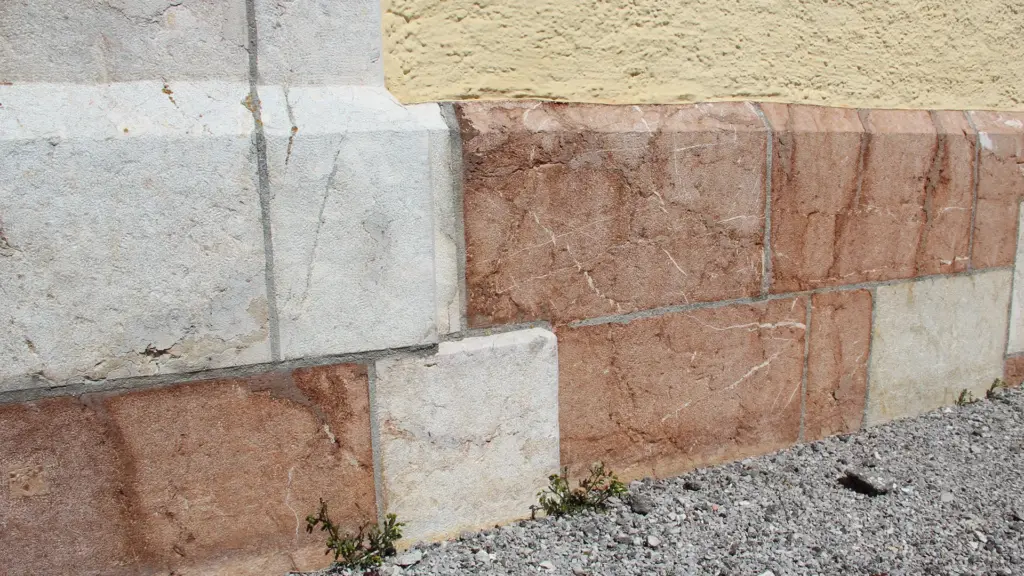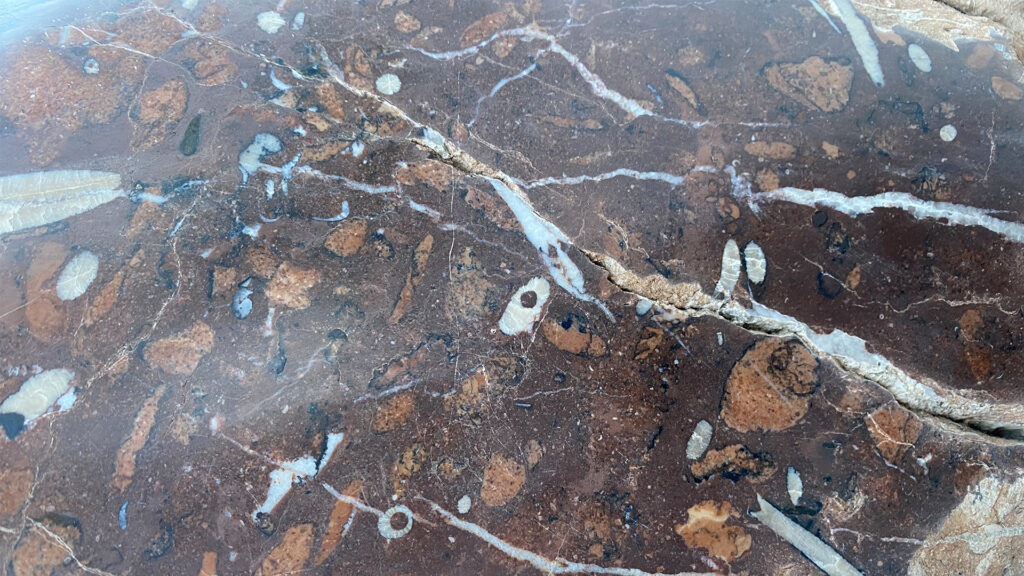The red and white limestones from the quarry near Maurach are not only beautifully patterned and colored but also well suited for construction purposes. With open eyes, you can discover these rocks used all around Lake Achensee:
In the Parish and Pilgrimage Church of St. Notburga in Eben, the Red Liassic Limestone were used as decorative stones. Parts of the outer facade, the altar steps of the side altars, the bases of the wall pillars, and parts of the church floor are made of red and white limestone from the quarry. You can also find these rocks along the federal road B171 and Achenseestraße: The lateral retaining walls and underpasses were made from rocks of the quarry.

The picture shows a side altar inside St. Notburga’s Church. The altar steps are made of Red Liassic Limestone from the quarry. (Image source: own iIllustration)

The outer wall of the church can be seen here. The red and white rocks are used here as decorative stones. (Image source: own iIllustration)

Here you can see the construction along Achenseestraße B171. The red and white limestone used here comes from the quarry near Maurach. (Image source: own illustration)
The Red Liassic Limestone
The exhibit rock in front of you is a Red Liassic Limestone from the quarry area. Are you wondering why the Upper Rhaetian Limestone is white and the Red Liassic Limestone is red?
The reddish color is due to small amounts of iron-rich minerals, such as iron oxide or iron hydroxide. The iron was deposited into the mud on the sea floor during sedimentation.
If you take a closer look at the exhibit rock, you can find clues about its formation on the sea floor. Do you see the fossils hidden in the exhibit rock? Here, the skeletons of ammonites and belemnites—spiral-shaped and elongated cephalopods that became extinct long ago—are clearly visible.

The close-up of the Red Liassic Limestone shows the reddish color, as well as fossils, including belemnites (cephalopods) marked in red. (Image source: own illustration)
Perhaps you’ve also noticed that the color of the pebbles on the forest path changes. Where the red limestone outcrops, the path is tinged with red. Before and after this station, where the ground consists of white Upper Rhaetian Limestone, whitish pebbles dominate the forest path.
